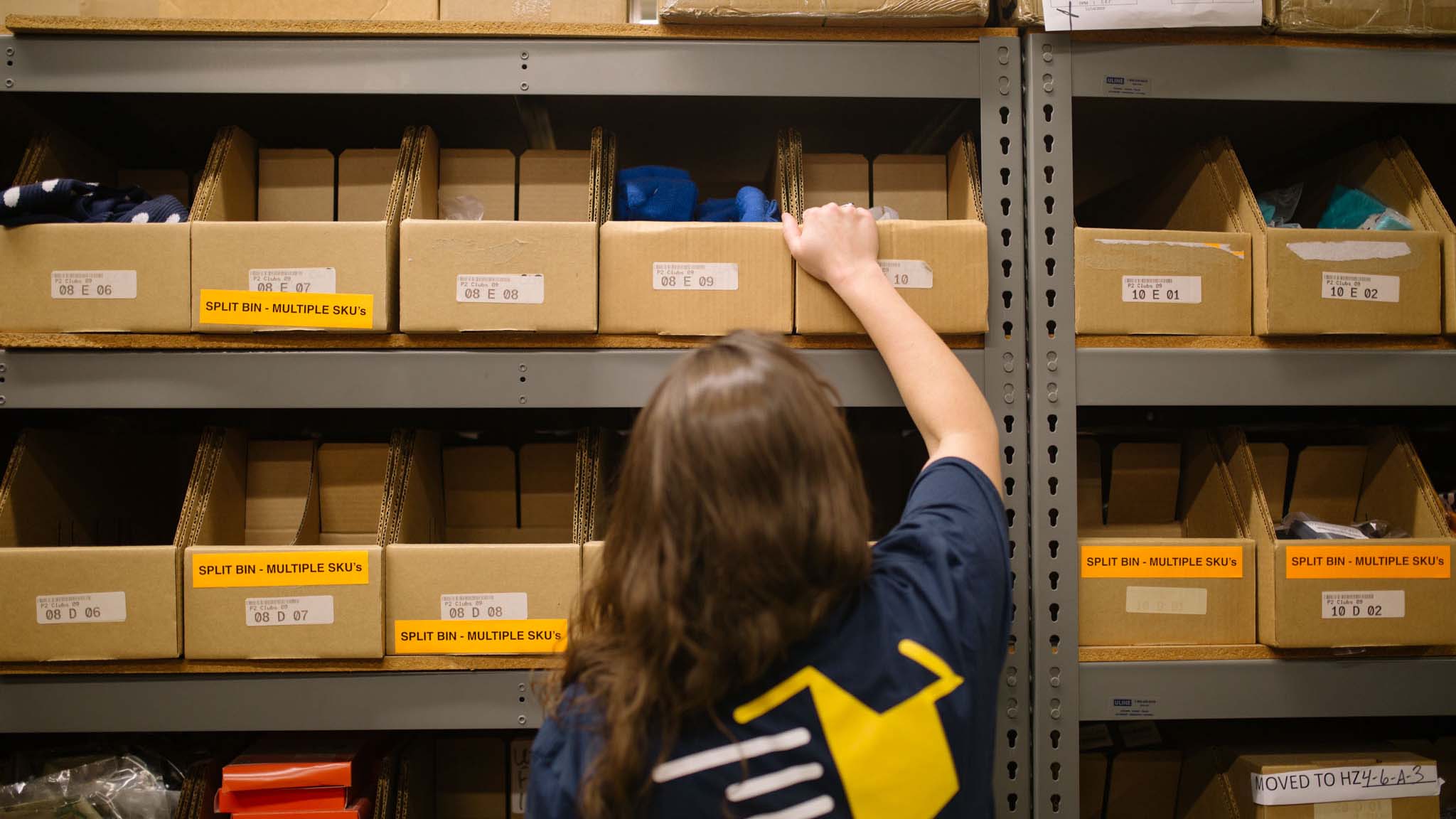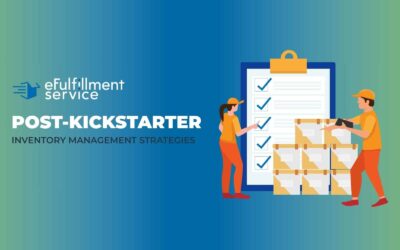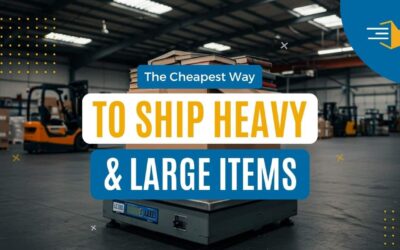
Navigating Online Retail Business Models: Dropshipping vs. ECommerce
As you stand on the brink of launching your own online business, you’re faced with a crucial decision: should you use dropshipping or a more traditional ecommerce model? With your goal to achieve financial independence, this choice is more than just a business strategy—it’s a step towards realizing your dream. This blog aims to provide you with the insights you need to make an informed decision. Let’s explore the similarities and differences of dropshipping and ecommerce fulfillment together, helping you balance risk, control, and potential for growth in your exciting entrepreneurial journey.
Dropshipping vs. Ecommerce: Two Sides of the Online Retail Coin
Imagine you’re at a crossroads. On one path, dropshipping – a model where you sell products without holding inventory. You’re the maestro, orchestrating sales without ever touching the product. Your partner? A supplier who handles the storage, picking and packaging, and shipping. It’s like being a chef who designs the menu but doesn’t cook the dishes.
On the other path lies ecommerce, the traditional route. Here, you’re not just the chef but also the owner of the kitchen. You manage inventory, oversee shipping, and ensure every aspect of the customer experience is top-notch. It’s more hands-on, but with greater control comes greater responsibility.
Why This Matters
In the world online retail, knowing which path to choose is crucial. Each model has its rhythm, its rewards, and its challenges. Understanding the nuances of dropshipping and ecommerce is more than just business savvy – it’s your roadmap to online retail success. So, buckle up, entrepreneurs! We’re about to embark on a journey to discover which model resonates with your business vision and goals. Let’s explore this dynamic duo of the digital age and set the stage for your online success story!
Understanding Dropshipping
Ah, dropshipping – a term that buzzes with promise and potential. But what exactly is it?

What is Dropshipping?
Dropshipping is a retail fulfillment method where a store doesn’t keep the products it sells in stock. Instead, when a store sells a product, it purchases the item from a third party supplier and has it shipped directly to the customer. As a result, the merchant never sees or handles the product. This model allows for a reduction in upfront investment and overhead costs compared to traditional retail models.
Key Characteristics of the Dropshipping Model
- Low Overhead Costs: Without the need for inventory, you save on storage and upfront product costs.
- Flexibility: Change your product offerings easily without worrying about leftover stock.
- Scalability: With the right strategies, scaling your business can be smoother and quicker.
- Relying on Suppliers: Your success is intertwined with your suppliers’ reliability and product quality.
Advantages and Disadvantages of Dropshipping
Advantages:
- Minimal Capital Requirement: Starting a dropshipping business doesn’t demand a hefty investment.
- Wide Product Selection: You can offer a variety of products without the risk of unsold inventory.
- Ease of Getting Started: Without the need to manage physical products, starting up is a breeze.
Disadvantages:
- Lower Profit Margins: Since ease comes at a cost, expect thinner margins compared to traditional ecommerce.
- Dependence on Third Parties: Supplier issues can directly impact your customer satisfaction.
- Highly Competitive: The low barrier to entry means more players in the market, intensifying competition.
- Shipping Complexities: Managing logistics from multiple suppliers can lead to inconsistent shipping times and costs.
- Limited Customization: Little opportunity to customize or private label products, making it harder to stand out.
- Quality Control Issues: Without handling the products directly, ensuring consistent quality can be challenging.
- Customer Service Challenges: Addressing customer issues is more complicated when you’re not directly managing inventory or shipping.
Need More Explaination?
Below is a fantastic video by Oberlo explaining exactly what dropshipping is, why people choose this method, as well as some of the challenges faced from using this online selling method.
In summary, dropshipping stands as a beacon for those seeking an entry into online retail with minimal risk and investment. However, it’s not a one-size-fits-all solution. The path to success requires smart strategy, a keen eye for market trends, and a robust partnership with very reliable suppliers.
Understanding Ecommerce Fulfillment

What is Ecommerce?
Ecommerce, the classic model of online retail, involves selling products directly to consumers through your own platform. Here, the workflow is straightforward but layered: you source or create products, stock them, manage inventory, handle marketing, process orders, and ship products directly to customers.
Key Features of Ecommerce Businesses
- Inventory Management: Unlike dropshipping, you’re in charge of inventory, which means greater control but also higher risk.
- Customer Relations: Direct interaction with customers allows for personalized service and brand building.
- Full Control: You oversee every aspect, from product selection to customer service.
Advantages and Disadvantages of Ecommerce
Advantages:
- Higher Profit Margins: Owning the inventory can lead to better profit margins.
- Brand Control: You have the freedom to shape and grow your brand as you see fit.
- Quality Assurance: Direct oversight allows for consistent product quality.
-
Shipping Flexibility: Owning your inventory allows you to have more control over the shipping process. You can offer various shipping options, bundle products (also known as kitting), and create promotional packages. This flexibility can enhance the customer experience and can be used as a competitive advantage.
-
Customization and Personalization: When you handle your own inventory, you have the opportunity to offer customized or personalized products, which is often not possible with dropshipping. This can include custom packaging, branding, or even modifying products to meet specific customer needs.
Disadvantages:
- Higher Initial Investment: Stocking inventory and setting up logistics require significant upfront investment.
- Risk of Unsold Inventory: You bear the risk of products not selling.
- Operational Complexity: Managing inventory, shipping, and customer service requires more effort and resources.
Ecommerce is a dance of balancing control and responsibility. It’s a model that rewards those who are willing to invest more upfront for potentially greater returns and brand autonomy. The key to success in ecommerce lies in strategic planning, efficient inventory management, and creating a strong, distinctive brand presence.
Interested in Shipping Your Products Easier?
Comparative Analysis: Dropshipping vs. Ecommerce
In the ring of online retail, we have two contenders: Dropshipping and Ecommerce. Let’s break down how they measure up against each other.
Side-by-Side Comparison Dropshipping vs Ecommerce
| Aspect | Dropshipping | Ecommerce |
|---|---|---|
| Investment | Low initial investment; minimal start-up costs. | Higher upfront costs due to inventory and storage. |
| Risk | Lower risk; no unsold inventory concerns. | Higher risk; dependent on inventory sales. |
| Control | Less control over product quality and shipping. | Full control over inventory and customer experience. |
| Profitability | Lower profit margins due to ease of entry and competition. | Potential for higher margins, but dependent on sales. |
| Scalability | Easy to scale with marketing efforts and supplier reliability. | Requires strategic scaling, balancing inventory with demand. |
Which Model Should You Choose?
To give you an idea of which model would work best for your business, we’ve outlined two business scenarios. One that would be a good fit for dropshipping and one that would be a great fit for ecommerce. Read both scenarios to see which sounds the closest to your specific situation.

Scenario 1: Dropshipping
Imagine a budding entrepreneur, Alex, who wants to start an online business with limited funds. Alex is drawn to a trending niche like eco-friendly products but doesn’t have the capital for inventory. Dropshipping is perfect for Alex, allowing experimentation with different products and markets without the financial burden of stock.
Why Dropshipping Makes Sense for This Business:
New Entrepreneur with Limited Capital: Ideal for individuals like Alex, who wants to start an online business but lacks the funds for inventory.
Experimenting with Market Trends: Perfect for testing various products in real-time to gauge market interest.
Flexibility in Product Offerings: Allows for easily adapting to changing consumer preferences without inventory constraints.
Low-Risk Trial for Business Concepts: Minimizes financial risk while exploring the viability of different business ideas.

Scenario 2: Ecommerce Fulfillment
Sarah, on the other hand, has been crafting unique, handmade pottery for years. She has a loyal customer base and a clear brand vision. Ecommerce is the way to go for Sarah. It allows her to control the quality of her products, build her brand, and cater to her niche market, even though it requires a larger initial investment and inventory management.
Why Ecommerce Makes Sense for This Business:
Established Businesses with a Specific Niche: Suited for entrepreneurs like Sarah, with a unique product line like handmade pottery.
Need for Brand and Quality Control: Ideal for those who want to maintain high standards in product quality and customer experience.
Has Long-term Business Vision: Best for those aiming to build a lasting brand with a loyal customer base.
Ready for Higher Investment and Risk: Suitable for those who can manage the initial investment and are prepared to handle inventory-related risks.
Could Using a 3PL Simplify Ecommerce Fulfillment?

What are 3PLs?
Third-Party Logistics (3PL) providers are specialized companies that handle the logistics of warehousing and shipping for other businesses. Think of them as the backstage crew in a theater production – they ensure that the products are stored safely, managed efficiently, and delivered promptly to your customers.
How 3PLs Can Benefit Traditional Ecommerce Businesses
- They Have Expertise in Logistics: 3PLs bring a wealth of knowledge and experience in supply chain management, which can be invaluable, especially for businesses lacking in this area.
- They Are Cost-Effective: By leveraging the scale and networks of 3PL providers, businesses can reduce shipping and storage costs.
- They Allow You to Focus on Core Business: Outsourcing logistics lets businesses concentrate on product development, marketing, and customer service.
- They are Scalable: 3PLs can easily adjust to the changing volume of orders, making scaling up (or down) more manageable.
Comparing 3PLs with In-House Fulfillment in Ecommerce
| Aspect | 3PL (Third-Party Logistics) | In-House Fulfillment |
|---|---|---|
| Cost | More cost-effective due to shared resources and economies of scale. | Requires significant investment in warehouse space, staff, and technology. |
| Expertise | Specialized knowledge and technology for efficient logistics. | Building similar levels of expertise in-house can be challenging and resource-intensive. |
| Flexibility and Scalability | Offers greater flexibility to handle varying order volumes; scalable with business growth. | Tailored to specific business needs but may be less adaptable to sudden changes in volume. |
| Control | Less direct control over logistics processes. | Full control over every aspect of the fulfillment process, offering precise management but greater responsibility. |
In essence, the choice between 3PLs and in-house fulfillment hinges on the specific needs, resources, and growth plans of an ecommerce business. 3PLs offer an efficient, scalable solution that lets businesses focus on their core competencies, whereas in-house fulfillment provides greater control but requires more substantial investment and management.
Is making the leap to a 3PL right for you?
Is a 3PL the key to scaling your business efficiently? Use this simple quiz to find out! Score each of the following eight questions from 1 to 5 (where 1 = Strongly Disagree, 5 = Strongly Agree) to evaluate if a fulfillment service might be a good choice for your company.
Business Considerations and Decision-Making: Dropshipping vs. Ecommerce

When venturing into the realm of online retail, the decision between dropshipping and traditional ecommerce is pivotal. This choice is not just about selecting a business model; it’s a strategic decision that shapes your brand’s future. Each model brings its unique set of requirements, risks, and rewards. Aspiring entrepreneurs must consider several critical factors, including initial investment, risk tolerance, brand control, customer experience, and scalability. This section delves into these considerations, offering insights to guide you in making an informed decision that aligns with your business vision and goals.
| Things to Consider | Ecommerce | Dropshipping |
|---|---|---|
| Capital Requirement | Consider if you have the budget for inventory and logistics. | Ideal if you have limited funds and want to minimize upfront costs. |
| Brand Development | Assess if brand control and customer experience are top priorities for you. | Reflect on whether limited branding control aligns with your business goals. |
| Operational Involvement | Are you prepared to manage inventory and handle logistics? | Preferable if you want to focus on marketing and sales, not operations. |
| Market Responsiveness | Can you afford slow adaptation due to inventory commitments? | Good choice for quickly adapting to market changes without inventory concerns. |
| Long-Term Strategy | Plan for building a lasting brand and customer base. | Consider if your focus is on short-term market exploration and testing. |
Fulfill Orders Effortlessly!
Conclusion – Dropshipping vs Ecommerce
In the dynamic landscape of online retail, choosing between dropshipping and traditional ecommerce hinges on balancing various factors. Dropshipping offers low startup costs and flexibility, making it suitable for entrepreneurs testing the market with limited capital. However, it presents challenges like lower margins, dependence on suppliers, and competitive pressures. Ecommerce, while requiring more investment, provides greater control over branding and customer experience, potentially leading to higher profitability. The decision should align with your long-term business strategy, financial capability, and commitment to operational involvement. Ultimately, understanding each model’s nuances is key to selecting the path that best aligns with your unique business vision and goals.
Your Next Steps
Ready to embark on a journey toward streamlined logistics and enhanced growth? Reach out to eFulfillment Service for a bespoke fulfillment solution. We specialize in helping business like yours navigate the complexities of order fulfillment with ease and efficiency. Here’s what we offer:
- A Free Quote: Contact us today to get a free quote and learn how our services can be customized to your unique business needs.
- Proven Track Record: Our commitment to excellence is reflected in the testimonials from numerous satisfied clients.
- Tailored Solutions: We understand that each startup has its unique challenges, and we’re here to offer solutions that fit perfectly with your business model.
Let eFulfillment Service be your partner in transforming your fulfillment process, enhancing your customer experience, and catapulting your business to new heights.
Simplify Ecommerce with a Fulfillment Service!
FAQs: Dropshipping vs Ecommerce
What is the difference between dropshipping and ecommerce fulfillment?
Dropshipping involves selling products without holding inventory, relying on suppliers to ship directly to customers. Ecommerce fulfillment requires managing your own inventory and handling shipping.
What is better: dropshipping or ecommerce?
It depends on your goals, resources, and risk tolerance. Dropshipping is ideal for low capital and flexibility, while ecommerce offers more brand control and higher profit potential.
Can I be a millionaire from dropshipping?
Becoming a millionaire through dropshipping requires not only strategic marketing and strong supplier relationships but also a keen understanding of market trends and customer needs. Success varies widely.
Why is dropshipping not always profitable?
Dropshipping can face low profit margins due to intense competition, reliance on suppliers, and limited control over branding and customer service.
Do I need a large amount of money to start a dropshipping business?
One of dropshipping's advantages is the low initial investment compared to traditional ecommerce.
Can I scale a dropshipping business in the future?
Dropshipping can be scaled, especially through effective marketing and solid supplier relationships. However, it is not usually quite as effective or easy as scaling a traditional ecommerce business.
Can I avoid the fulfillment process with an ecommerce fulfillment business?
In traditional ecommerce, you can't avoid fulfillment, but using third-party logistics (3PL) to manage your fulfillment can be a great way to make this process easier and more affordable.




0 Comments